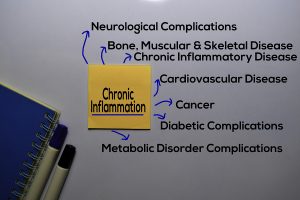A study from Washington State University (WSU) showed some of the key factors for centenarians to survive. The publication of the study goes back to June 17, 2020. In general, it was common knowledge that genetics plays a role in 25% to 35% of centenarians for their survival. That is to say, the remainder is the result of lifestyle factors. It is important to realize that the environmental factors play a significant role in the survival of centenarians, said Rajan Bhardwaj, a second-year WSU medical student. He and his research team determined what allowed centenarians to reach an age of 100 or above. Briefly, they identified the following factors that were necessary.
Three factors identified by the Washington State University study
- walkability of the neighbourhood, which encourages regular exercising
- belonging to the higher socioeconomic class
- a high percentage of working population in the neighborhood (a mixed population) was also important
In the discussion the authors of the WSU study said that “blue zones” of centenarians had been mentioned before in the literature. To clarify, these are areas in the world where more than the average of centenarians live. Dan Buettner used the term “blue zones” in a National Geographic article about where centenarians were located.
The blue zones
He wrote a book about the location of the 5 blue zones. Notably, they are located in Sardinia (Italy), the islands of Okinawa and a group of Seven Day Adventists in Loma Linda. California. In addition, the Nicoya Peninsula of Costa Rica, and the island of Icaria, Greece complete the 5 blue zones. Specifically, Dan Buettner described the following characteristics of the lifestyle of centenarians.
- They engage in regular physical activity
- Mostly eating a plant-based diet including legumes
- Calorie intake is moderate
- Moderate intake of alcohol, mostly wine
- Having a purpose in life
- Engaged in family life
- Having an active spiritual life
- Reducing stress
- Engaged in social life
Other attributes of centenarians
Dr. Thierry Hertoghe gave a presentation in Las Vegas on Dec. 14, 2019 where he stated that centenarians are positive thinkers. This was at the 27th Annual World Congress on Anti-Aging Medicine. In particular, the topic of his talk was “Positive Psychological Attitudes of Centenarians “. Dr. Hertoghe is an endocrinologist in Belgium. He took an interest in people above the age of 100. These people, he felt, are special people with a very optimistic outlook on life. Dr. Hertoghe went on to say that centenarians have a will to live. Indeed, they adapt to changes; they have a sense of purpose, and they stay active.
More positive attributes of centenarians
Other psychological features, by the same token, show that they have a positive mood and they avoid stress and anxiety. Another key point is that they have self-determination. It must be remembered also that they are very sociable, have close family ties, love their relationships and often have a strong religious faith. In addition, there is a connection between their basic values, beliefs and spirituality. Truly, centenarians insist on their freedom and they have a feeling of youth. For one thing, centenarians have their own centenarian spirit where they can feel young or old.
In the following I am reviewing some of the details that Dr. Hertoghe gave.
The will to live
For one thing, it takes courage to grow old, and all centenarians have this. They say “Life is worth living”. Essentially, they have a certain resiliency in a world that has an obsession about youth. Despite negative experiences they had to overcome they do not give up and they enjoy life as much as they can. A Finnish study examined 400 individuals aged 75-90 and followed them for 10 years. Group 1 who wished to live less than 5 years had a mortality rate of 68%. Group 2 wished to live for 5-10 years. They had a mortality of 45.6%. The last group, group 3 wanted to live more than 10 years. Surprisingly, their mortality was only 33.3%. Be careful what you wish for!
Adaptability
In other words, this describes the capacity to overcome adversity and your ability to adjust. In a study of 7400 Chinese centenarians’ resilience to changes was measured with psychometric psychological tests. The majority of subjects did not qualify for being resilient. However, 9% of male centenarians and 6% of female centenarians had the resiliency where they qualified for high adaptability. This high resilience group had a 2%-4% lower mortality risk. They had a 36%-55% higher probability of not developing cognitive impairment. That is to say, they rated themselves to be in good health and having a “good life” satisfaction. These resilient centenarians had a 7%-12% higher probability of not developing a physical disability. In essence, these high resilient centenarians had no short-term health decline.
Remaining active
If a centenarian remains active and moves about several hours per day, the body functions are preserved. Anna Mary Robertson Moses who was known by her nickname “Grandma Moses” took up painting at age 78. She died at age 101 in 1961.
Positive emotions
One study of 54 Ashkenazi Jewish older adults (aged 98-107) compared those with positive emotions to those with negative emotions. The researchers noted that a positive attitude about life allowed centenarians to live longer.
A study involving 2282 Mexican Americans aged 65 to 99 showed that positive affect scores were a predictor for the following. Subjects with a high positive affect had a 52% lower probability of becoming physically disabled. They were 36% less likely than the negative controls to lose their walking speed. In addition, they were 47% less likely to die during the two-year observation period than their negative controls.
Nurses’ Health Study and Veterans Affairs Normative Aging Study
Two studies, the Nurses’ Health Study (NHS) and men from the Veterans Affairs Normative Aging Study measured optimism. The researchers found that those with the highest optimism scores had a 1.5-fold higher probability in women and 1.7-fold in men to survive to age 85. This was compared to a control with the lowest optimism scores. Dr. Hertoghe provided 19 more studies that showed the effects of positive emotions regarding long term survival. For brevity reasons I will not dwell on them here.
What is the centenarian spirit?
When people are older than 100 years, they often have a mix of humor and eccentricity; they express emotions openly and they are happy people. They accept the death of spouses, siblings and significant others.
By the way, humor has a strong predictive survivor value. In a study that researchers conducted over 15 years, there was a clear positive effect of humor regarding mortality. A sense of humor reduced the all-cause mortality by 48% in males. In women humor lowered mortality regarding cardiovascular disease by 73%. Humor reduced death due to infections in women by 83%. Men had a non-significant reduction of all‐cause mortality by 12% and a significant lower mortality due to infections by 74%. Dr. Hertoghe cited three more publications that showed the power of humor in reducing disease and disability.
The fasting mimicking diet helps you to reach a longer life
A clinical trial with 100 subjects was undertaken by Dr. Longo and his research team. He measured markers after 3 cycles of a fasting mimicking diet for 5 days every month. They found that the FMD reduced aging markers, improved diabetes and reduced susceptibility for cancer and cardiovascular disease. In another publication Dr. Longo and co-authors describe how autoimmune diseases can be improved by the use the fasting mimicking diet for 5 days every month.
Another publication by Dr. Longo describes that “age-related disorders including diabetes, cardiovascular disease, cancers and neurological disorders such as Alzheimer’s disease, Parkinson’s disease and stroke” can be prevented by fasting mimicking diet for 5 days every month.
Even cancer prevention and cancer treatment can be helped by the fasting mimicking diet. The FMD makes chemotherapy more tolerable.
Conclusion
As we reviewed the factors that lead to longevity, we learnt that engaging in regular moderate exercise is one of the key factors. But belonging to the higher socioeconomic class and living in a mixed neighborhood with people from all walks of life is also important. We also reviewed the blue zones according to Dan Buettner. Mostly eating a plant-based diet including legumes with moderate calorie restriction prolongs your life. Add to this moderate intake of alcohol, mostly wine, and having a purpose in life. Augment this further with being engaged in family life, having an active spiritual life and reducing your stress level.
Living longer is a matter of fulfilling these longevity factors
With all of this you are on your way to become a centenarian. A review by Dr. Hertoghe in a lecture given at an Anti-Aging Conference in Las Vegas in 2019 added more criteria centenarians have. He provided references regarding the will to live, being adaptable, remaining active and harboring positive emotions. The more of these factors you can adopt, the longer you will live. At the same time, you will avoid getting diseases like heart attacks, strokes or cancer, which leads to a longer and healthier life.
The above text contains parts of this blog. The part about the fasting mimicking diet was published here before.















